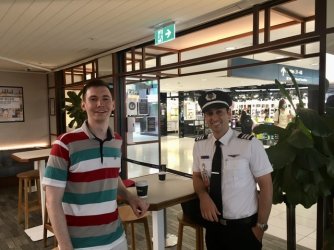mjt57
Active Member
- Joined
- Jan 9, 2012
- Posts
- 983
Or they may be doing this...I guess they’re doing the best they can.

How out of work pilots are taking to the sky without getting in a plane
Airline pilots who have found themselves out of work during COVID-19 are in high demand as drone operators. CEO and co-founder of Aerologix, a company which matches drone pilots with projects, Tom Caska, says his company is seeking airline pilots because of their in-depth knowledge of aviation...















